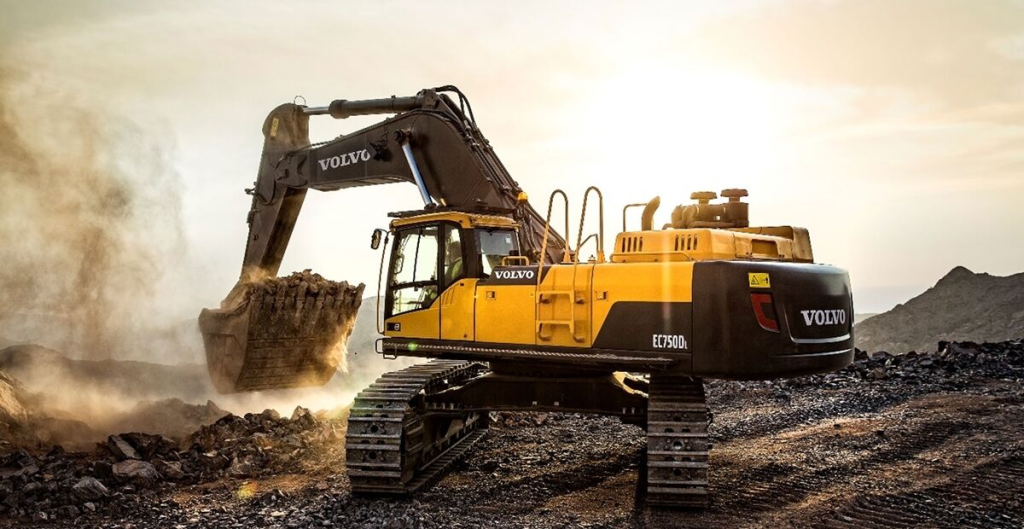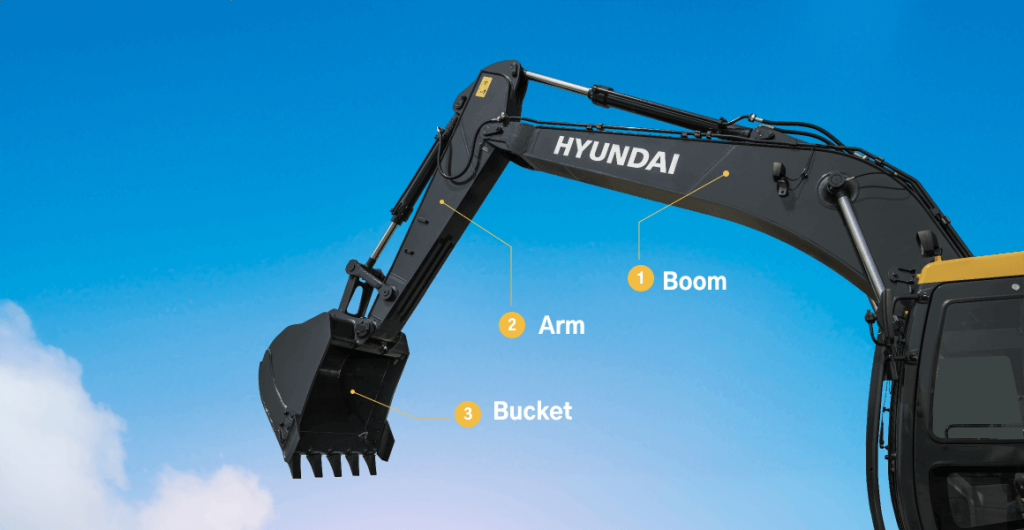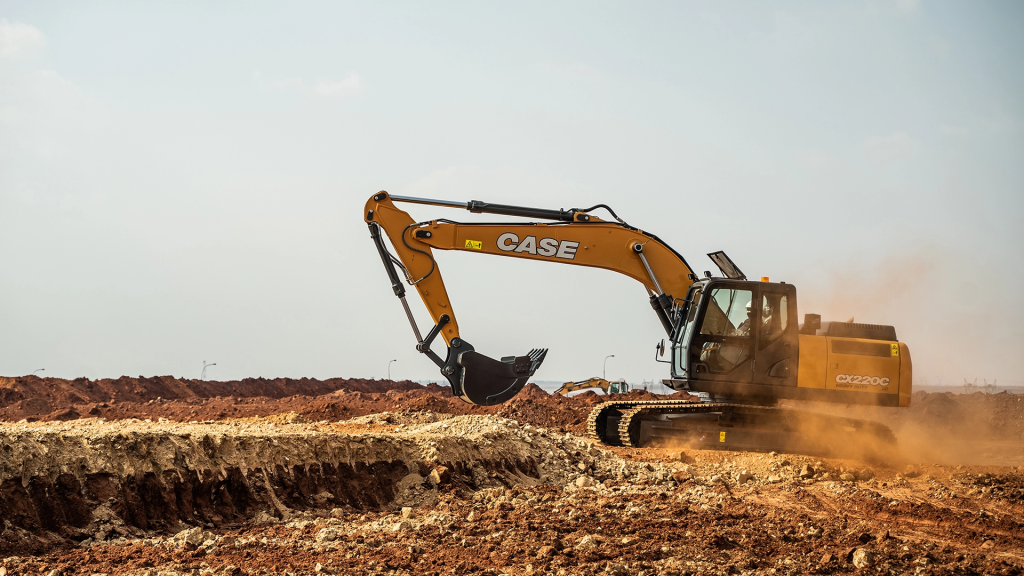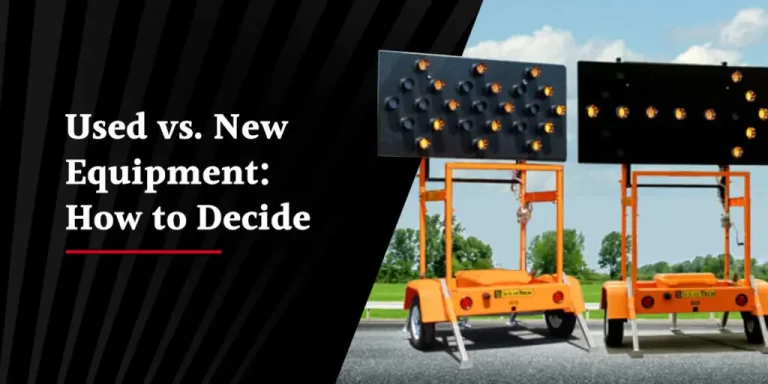26 Main Parts of an Excavator and Their Functions
Keywords: parts of an excavator, excavator arm parts, excavator parts diagram, excavator diagram
Excavator parts and functions

It’s important to understand how excavators operate before using one. Heavy construction equipment that is used for excavating, moving, and lifting materials is called an excavator. They contribute to the efficiency and safety of excavation and building projects. Being aware of the fundamental components of an excavator can make you a more skilled operator. This manual explains the parts and uses of an excavator.
Undercarriage parts
The excavator undercarriage is the foundation that supports the entire machine, consisting of critical components such as track shoes, rollers, idlers, and sprockets that work together to provide traction, stability, and mobility. These durable parts are engineered to withstand the intense stresses and harsh operating conditions encountered during construction, demolition, and earthmoving tasks, and their proper maintenance and replacement are crucial for ensuring the excavator’s long-term performance and reliability. The undercarriage plays a vital role in the excavator’s overall capabilities, enabling it to traverse a wide range of terrains and job site conditions with confidence and efficiency.
Excavator Tracks
The tracks of the excavator, typically made with steel-reinforced rubber, move the machine. Some excavators are wheeled but function similarly to those with tracks.
Track Frame
The track frame is where the excavator tracks attach to the undercarriage, functioning similarly to axels.
Track Pad
Track pads can help prevent excess noise, vibration and damage, as well as provide better traction during operation.
Track Chains
Track chains are what allow an excavator to move efficiently. They function similarly to bicycle chains in that they’re made up of connected flexible links.
Track Shoes
If you imagine the tracks of an excavator, the track shoes are the individual parts of the track that dig into the ground and pull the excavator along.
Track Bolts
Track bolts link each track shoe together to form the entire track.
Rock Guards
Rock guards are exactly what they sound like — they attach to the tracks of your excavator to protect the machine from debris and stray objects.
Sprockets
Sprockets are the mechanisms that run between the excavator track chain links. They behave like a giant bicycle sprocket, moving the chain along to propel the machine.
Rollers
Rollers are the metal wheels on an excavator undercarriage used to align the chains and move them between the sprocket and idler. There are two sets of rollers — bottom and top — to facilitate chain functionality.
Idlers
Bigger than rollers, idlers are large metal wheels within the undercarriage that help guide the excavator tracks. Idlers are the final mechanism that keep tracks running smoothly, along with the rollers and sprockets.
Chassis
The frame that supports the entire excavator structure.
Excavator undercarriage diagram

Upper structure
Cab
Houses the operator and provides visibility and controls.
Engine compartment

Holds the engine that powers the excavator.
Counterweight
Provides balance and stability to the excavator.
Swing mechanism
Allows the upper structure to rotate and pivot.
Front Attachment (excavator arm parts)

Boom
The main arm that extends and positions the attachment.
Arm (Stick)
The secondary arm that connects the bucket to the boom.
Bucket
The attachment used for digging, loading, or other tasks.
Hydraulic System
Hydraulic pumps
Provide the necessary hydraulic pressure to power the excavator’s movements.
Hydraulic cylinders

Convert the hydraulic pressure into mechanical force to move the boom, arm, and bucket.
Hydraulic valves and hoses
Control and route the hydraulic fluid to the various components.
Electrical System
Batteries
Provide the electrical power for the excavator’s systems.
Wiring harnesses and control modules
Facilitate the electronic control and monitoring of the excavator’s functions.
Operator Controls:

Joysticks
Used to control the movement of the boom, arm, and bucket.
Pedals
Operate functions such as travel, swing, and attachment control.
Displays and monitors
Provide information about the excavator’s performance and operation.
These major parts work together to give the excavator its versatility, power, and precision in a wide range of applications. The specific number and configuration of parts may vary depending on the excavator model and manufacturer.
EXCAVATOR FAQS
Here are the answers to some common excavator questions to help you learn more about these machines and how to keep them in good condition.
What Are the Three Major Parts of an Excavator?
The boom and arm, undercarriage and cab are the 3 major parts of excavator.
How Does an Excavator Work?
To dig, scoop, and lift items, excavators employ a hydraulic system in conjunction with a boom, stick, bucket, and other tools. From the cab, the operator manages these operations. These parts are turned on by the hydraulic system, which enables the excavator to dig, scoop dirt, and carry out precise operations like loading trucks or trenching.

Except parts of an excavator, you may be also interesting in types of an excavator attachments. For more information, please look at hydraulicmagnet.com.


